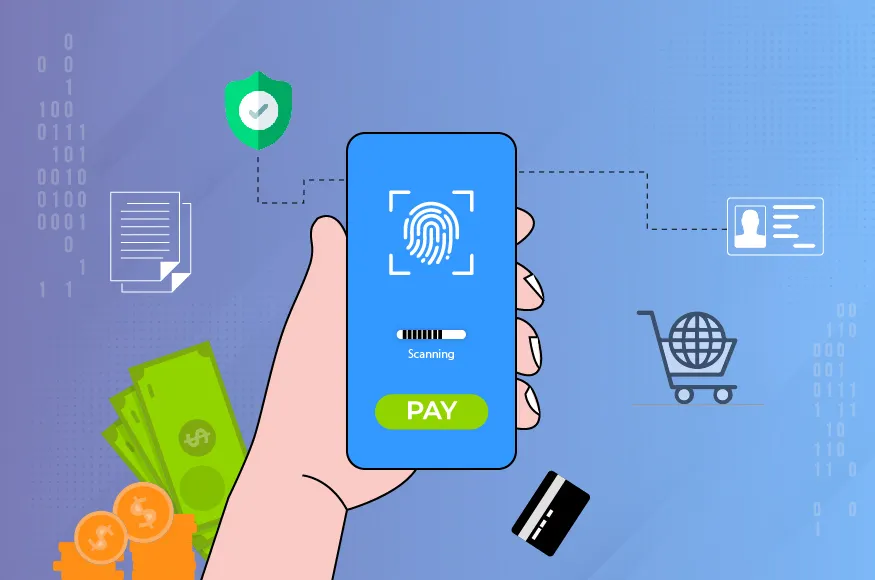The last decade has witnessed a progressive adoption of technology in almost all the industry. Few industries like banking and fintech have embraced the technology to grow in leaps and bounds. The revolutionizing spread of internet has ushered in an incredible increase in the number of the users and in turn the addressable market. The hitherto latent yet humongous body of rural population is today enabled with fintech services like online payment and transaction and even Ecom.
The one word which has propelled the whole population into the digital payment however is rather old fashioned -TRUST
Let’s dive deeper with an example. When a small business owner from a village in Bihar pays a vendor residing in another state, he needs be assured that the payment would indeed be done. Similarly, a migrant labourer, slogging in the southern state need to believe that his hard earned money is indeed going to reach his family in a matter of minutes if not seconds. However both the people also need assurances that it would be paid only to the intended parties and not to anyone else!
Authentication: The foundation of trust in the digital payment space
Authentication is used most commonly to assure the consumers of reliability. However, the question remains if the authentication mechanisms used currently produce the highest levels of trustworthiness.
Let’s delve into the circumstances where multifactor authentication is the best option. The following two out of the three ways have proved to be a strong medium for payment authentications:
· Possession: for example, a documented identify or device, etc.
· Knowledge: for example, a password or secret, etc.
· Inherence: for example, their fingerprint, hand, face, etc.
History of Biometrics — An evolved tool used in payment securities
Although biometrics go way back into human history, the contemporary commercial usage of biometric authentication began in the mid-nineteenth century using fingerprints by William James Herschel, a British administrator in India.
Biometric authentication gained popularity among consumers and service providers with the rising usage of feature-rich smartphones and other devices enabled with high-resolution cameras.
The instant gratification was stoked with the biometric authentication as it is based on the biological traits which are unique to every individual and cannot be faked.
One of the most widely used examples of biometric usage is that of Aadhaar card in the Indian Market:
All Indian residents are given an Aadhaar number, which is a 12-digit unique identification number. This figure is derived from their biographic and biometric data (a photograph, ten fingerprints, two iris scans). The concept was originally related to government subsidies and unemployment benefits, but as its authenticity is proved, it now includes a payment scheme.
The growth of biometric payments in a post-pandemic world
According to global surveys, the pandemic has heightened awareness and acceptance of biometric payments. This popularity doesn’t show any signs of abating as we step into the post-pandemic era, thanks to a focus on sanitation and contactless payments. Biometric authentication is popular due to the simple and uncomplicated process that it entails. Unlike the conventional authentication techniques, which suffer from glitches like not getting an OTP or issues with the strength of the internet network. Biometric payments are becoming more popular in large and densely populated countries such as Russia, South Africa, Kenya, Nigeria, Ukraine, India, and others.
Consumers sense the simple and foolproof option of biometric authentication is safer, quicker, and simpler. Biometric authentication provides several advantages over knowledge-based and possession-based authentications:
1. It’s universal, as these metrics can be found in every human.
2. It is unique.
3. It is permanent, as metrics like fingerprint or dental don’t change.
4. It can be easily recorded if the consumer wants it to be so.
5. Finally, it can be measured for comparison and cannot be falsified.
Conclusion: Though there have been cases where Biometric authentication based on statistical algorithms may occasionally provide false positives, resulting in erroneous results, the benefits of using biometric authentication for digital payments outweigh the drawbacks. This is causing a significant shift towards its adoption, and it seems to be continuously growing. In a diverse socioeconomic environment like India which has a population that is both cost-sensitive and aspirational, there is no other solution that can beat biometric authentication.
Author:
Shatrughan Sharma, Global Head- Payment Security
Wibmo A PayU/Naspers FinTech Company

